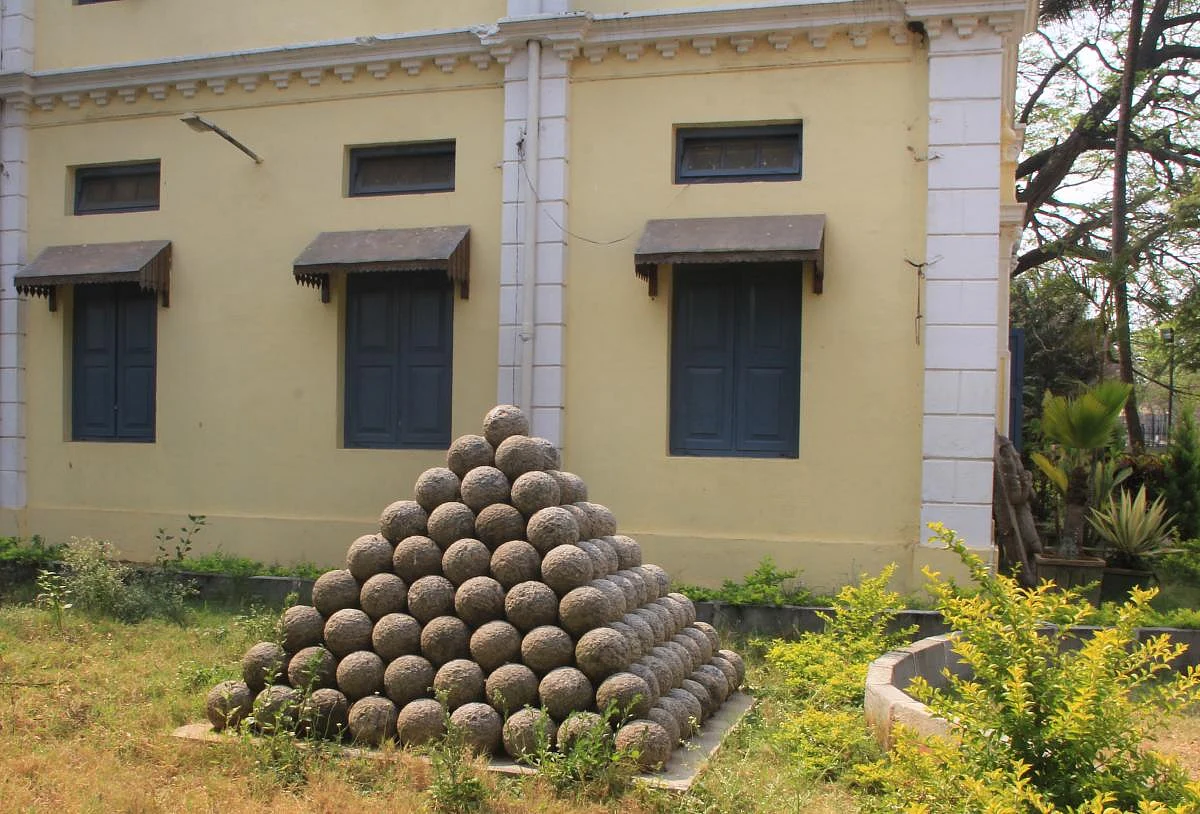
When Maharaja Chamarajendra Wadiyar passed away in December 1894, the whole of Mysore kingdom plunged into shocked grief. Newspapers spoke of the ‘mournful countenances’ of people everywhere.
The Regent Maharani Vanivilas Sannidhana and the Dewan Seshadri Iyer thought of several ways to memorialise the late king. A technical school and a temple in Mysore, a chatram in Tirupati, bathing ghats and a chatram in Srirangapatna were among the things planned.
The chatram and bathing ghats in Srirangapatna were seen as desiderata for pilgrims and others visiting the town and temple. The ghats were built in the late 1890s. A plaque above the entrance informs us that the Chamarajendra Memorial Chatram was built in 1904.
The two-storeyed structure is not far from the Ranganathaswamy temple. It is set within a fairly large garden.
Architect Yashaswini Sharma, who has an interest in the architecture of the erstwhile kingdom of Mysore, describes the striking building as a quaint example of the Wadiyar civic architecture of the early 20th century.
“In this period, we see a marriage of colonial revivalist architectural elements with vernacular sensibilities,” she explains. The three semicircular arches which mark the entry to the building, mouldings and dentils — small, teeth-like decorations — on the roof levels are all quite European in style.
The arresting, baroque-styled windows on the front façade are flanked by Corinthian pilasters. At first glance, they seem similar to baroque windows in England which often had large, seashell-shaped carvings above them.
But take a closer look and you will notice that the fan-shaped decoration comprises multiple nagas or snakes with their hoods spread out. Sheltering under the hooded snakes is a kalasha-like vase overflowing with plants.
The finials are also reminiscent of chhatris and temple kalashas. Windows on the rear and sides of the building have wooden hoods, their bargeboards carved into peepal leaves.
“The pediment is modified to host a parapet balustrade with the central portion having openings much like a gopura, and topped by the insignia of the Wadiyars displaying the Gandabherunda,” says Sharma.
In the early days, this chatram was given rent-free for visitors. One early, distinguished visitor who stayed here was T Paramasiva Iyer, a scholar and a judge, and also T P Kailasam’s father.
The chatram was well used by pilgrims visiting the temple. Others halted here when they came to the town to perform ceremonies, including last rites. It also became a popular venue for weddings and other smaller functions.
From the 1920s, the Muzrai department began charging a nominal rent. But in later decades, as weddings became fatter, the modest chatram was used less frequently.
The museum
In 1997, the chatram was converted into a museum. The museum housed on the ground floor is managed by the Department of Archaeology, Museums and Heritage of the Government of Karnataka.
The museum merits a visit. The central hall has some lovely sculptures of Surya, Bhairava, Venugopala, Keshava and Madhava from the 10th-12th centuries. A noteworthy exhibit in a room to the left is a large model of the Srirangapatna fort as it was in 1800.
A small gallery to the right of the central hall houses dusty, fading but rare photographs of some early 20th century British Residents and other officials of the Mysore state.
Unfortunately, there is hardly any information on the exhibits. Among the other random sketches and photographs dotting the museum are some interesting archival photographs of Srirangapatna.
The garden outside has numerous unusual 17th-century hero stones and several piles of stone cannonballs, 560 cannonballs to be precise!
A lovely wooden staircase leads to the first floor where there is a reading room and public library. Whereas the museum downstairs has the quiet of neglect, upstairs, you encounter that typical library hush.
Several heads are bent over books. In rooms that once reverberated with the notes of the nadaswara, all you hear now is the rustle of a newspaper and the occasional gentle swish of a page being turned.
(Meera Iyer is the author of ‘Discovering Bengaluru’ and the Convenor of INTACH Bengaluru Chapter)